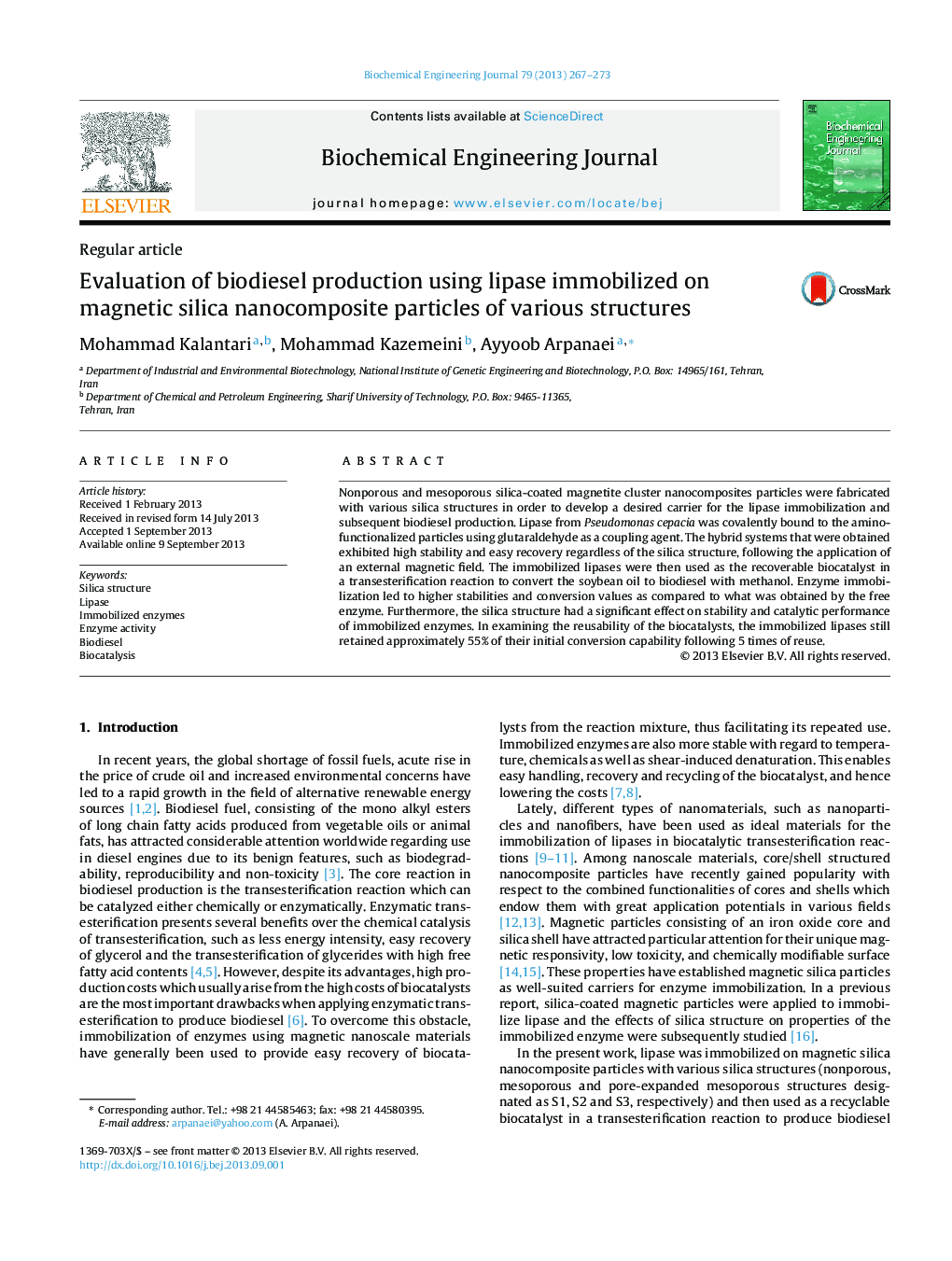| Article ID | Journal | Published Year | Pages | File Type |
|---|---|---|---|---|
| 3294 | Biochemical Engineering Journal | 2013 | 7 Pages |
•Lipase was immobilized on magnetic silica particles of various structures.•Resultant systems were used as recyclable biocatalysts for biodiesel production.•Enzyme immobilization led to higher stability compared to the free enzyme.•The silica structure had a significant effect on catalytic performance of immobilized enzymes.
Nonporous and mesoporous silica-coated magnetite cluster nanocomposites particles were fabricated with various silica structures in order to develop a desired carrier for the lipase immobilization and subsequent biodiesel production. Lipase from Pseudomonas cepacia was covalently bound to the amino-functionalized particles using glutaraldehyde as a coupling agent. The hybrid systems that were obtained exhibited high stability and easy recovery regardless of the silica structure, following the application of an external magnetic field. The immobilized lipases were then used as the recoverable biocatalyst in a transesterification reaction to convert the soybean oil to biodiesel with methanol. Enzyme immobilization led to higher stabilities and conversion values as compared to what was obtained by the free enzyme. Furthermore, the silica structure had a significant effect on stability and catalytic performance of immobilized enzymes. In examining the reusability of the biocatalysts, the immobilized lipases still retained approximately 55% of their initial conversion capability following 5 times of reuse.
Graphical abstractFigure optionsDownload full-size imageDownload as PowerPoint slide
